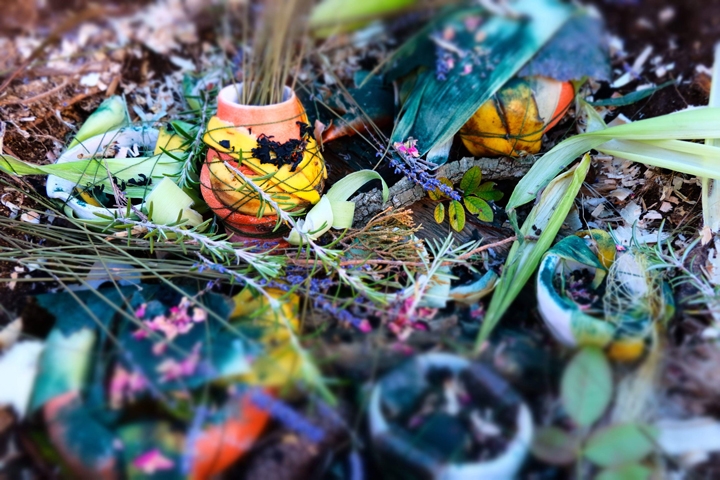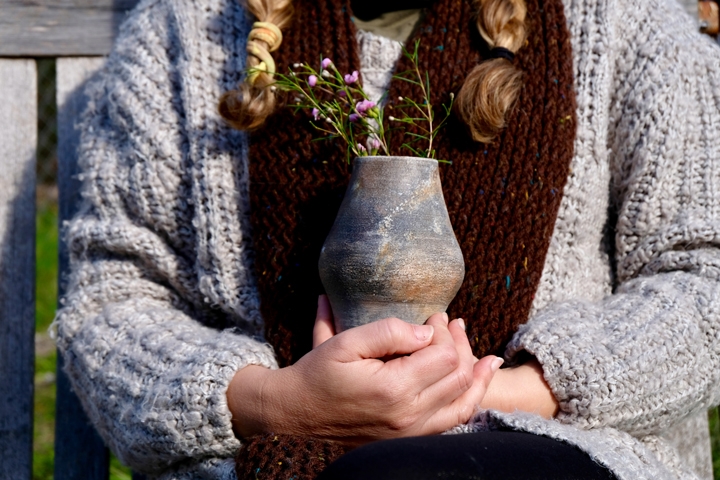A forest in Spring
By Aldeide Delgado Puebla
We could say that, the comprehension of urban and natural environment, in its physical and spiritual quality, have constituted an obsession for Gabriela Martínez since she was a student at the National Academy of fine Arts San Alejandro. Oriented towards abstraction as her creative artistic manifestation, the production of Gabriela came rara avis in a context that didn’t censured her abstract practice in an explicit manner, according to Rafael Diaz Casas in Un camino hacia la abstracción, but also didn’t foster it.
The rejection of the immediate past before 1959, the belief of abstract art as confined in its own language, and the need to create grounds for the construction of a new society were elements that leaded to curatorial discretion and reviews that characterized the approach to abstraction, at least for the first two decades of the revolution.
According to Ernesto Menéndez-Conde, abstract art and esthetic ideologies in Cuba, “the perception of abstract art as something that belongs to the past and that has been outweighed by new trends which are characterized for being in casual conversations, the marginal abstract art inside the Cuban artistic field, happened because it had nothing to do with the dominant esthetic speech of that time, which was focused on social commitment with art, the nationalist content and the stereotyping growth of the culture”. On the other hand, Menéndez-Conde also recognizes the decline of abstract art as a specific period and just for some “floating and lonely individuals with canvas and specific sculptures”.
Nevertheless, since the last fifteen years approximately, various researchers were oriented to exhibition projects, editorials and critics who rescued the Cuban abstract tradition, and its most rising production. In this context, Gabriela Martínez’s work is part of the informalist practice that she found in Los Once, with important exponents, and at the same time she founded a significant referent in Rigoberto Mena who was also his mentor. In the words of Nelson Herrera Ysla about Rigoberto Mena “An extraordinary spatial density forwards architectural dimension, sometimes from urban to dramatic situations bordering the theatrical”, and this is something we can find in both. Mena’s work “digs constantly in the terrestrial atmospheres, and in the cloudy sky, triggering a feeling of limitless vastness, of infinite geography, cosmic, where silence takes us through un-conceived mysteries of life”. No wonder Rigoberto Mena felt interested in Gabriela’s early works, characterized by the explosion of blacks, ochres and other colors in her canvases.
In Rema que aqui no pican or Sin titulo, both from 2012, the author propose a sensorial register of urban space. The transformation of the public scene, the pollution levels and the poverty, abandonment, and deterioration of the city and its buildings are some of the issues that rise in abstract production. Martínez, like Sr. G de Baudelaire in El pintor de La vida moderna (1863) is an observer, walker and philosopher. In her paintings she shows us the city from a subjective perspective; she contemplates Havana’s landscapes, its rusted buildings, its overlying layers.
The creative process could be defined as the centered action of capturing the spirit from the background.
Sometimes I think about her work as a subjective interpretation of the anthropologic practice, and in her case, the cognitive balance its product of personal manifestations, intuition and deep thinking about different places. In the quotation mentioned above Rema que aquí no pican, Gabriela adds a popular spelling that imitates banners present in the neighborhoods of Havana, in some cases related to political power, in others, people’s freedom. The range of canvases made in that stage, are part of a study that junctions with the concepts of an imaginary city, the heartfelt city, the lively city. They are an emotional map that manifests the relationships between the person –the artist- and the context.
In 2013 Gabriela Martínez visited New York, and her encounter with great expressionist abstract artists like Jackson Pollock, Willem De Kooning and Roberto Rauschenberg, predetermined an experimental period and the definition of the esthetic ideology speech of her later works.
At that time she bet for a wide inclusion of colors in her canvases, working with non-conventional materials and certain figurative tendency towards an expressionism that made her feel in debt with the genius artist Fidelio Ponce and Antonia Eiriz.
In some of her works, such as Pensamiento Fálico (2013), Autorretrato (2013) and Punto de Huracán (2013), we can perceive a change in her interests, which so far were so predominant in her art. Once considered a register of the exterior and public space, now Gabriela goes through an intimate and private ground, where she reflects her past, her family background and her different moods.
Her canvases are a self-exploration manifested in disturbing atmospheres, conflict and a defined psychological strength. Also, in Presencia de la ausencia (2015) or Una tarde sin tu verde (2015), we find attempts that explore the qualities of the materials use in the painting, the filling of the compositions and the thickness of her brushstrokes. At the end she is amused in abstraction, in its meditative dimension, spiritual and pictorial expression, still anchored in her need to feel and capture her surroundings.
Gabriela is a romantic!
As she calls herself, she is a shaman, a mediator between the mundane and the spiritual. We could say that her recent work is her most consolidated production. Her purifying vocation and inner reflection has found in nature the ultimate expression of freedom and peace.
In Area 51 (2015) or Universal Consciousness (2015), the artist has shown her preference for large formats as a way to represent eternity, immensity, and how capturing painting can be. The canvases not only embrace materials like acrylic, asphalt, cement, wood, oil or metal; but also include hair, fluids and prints of the artist during her process of creation, as another manifestation of the ritual that links her to the ancient, the natural and the integrity of the universe.


